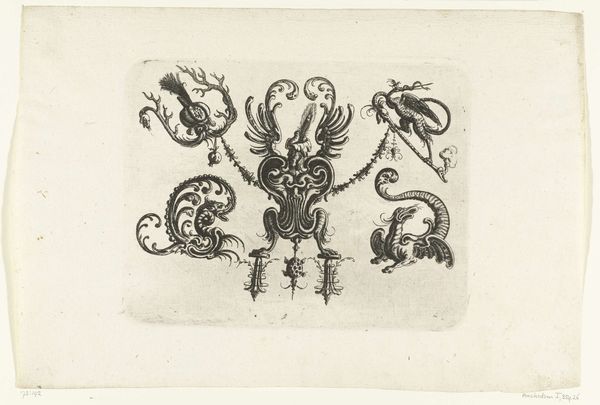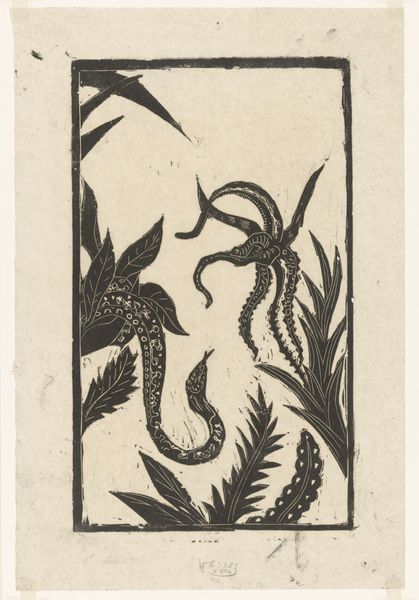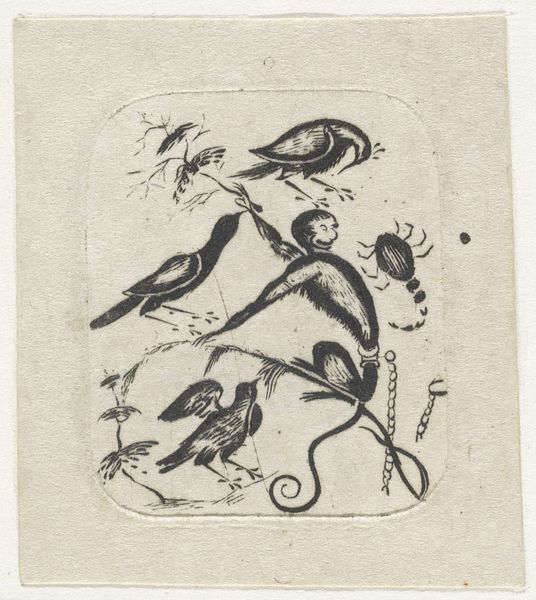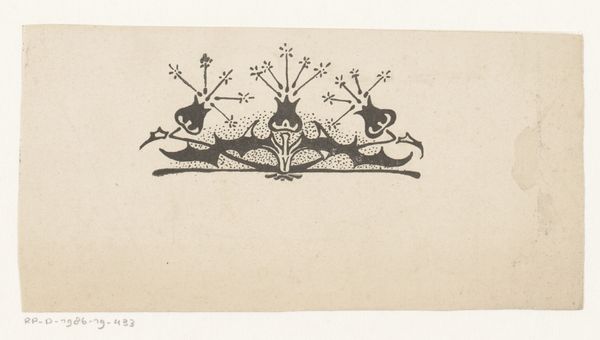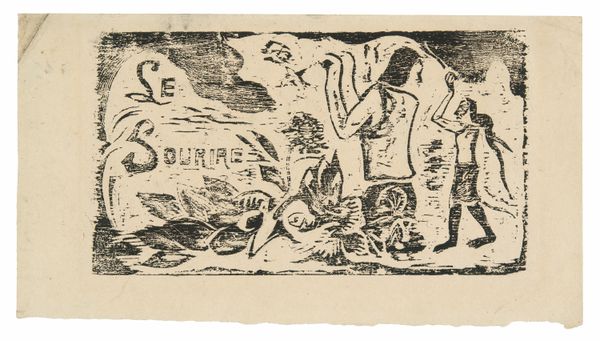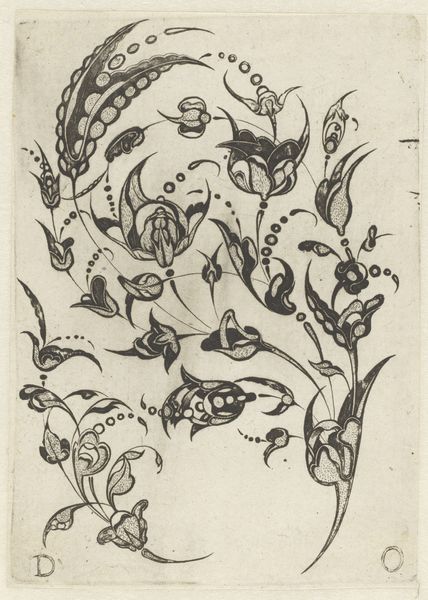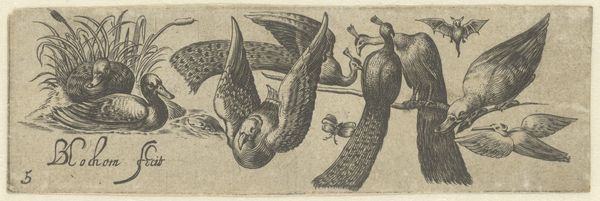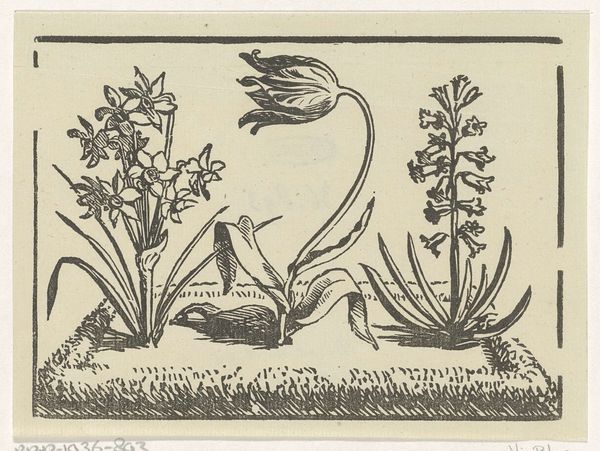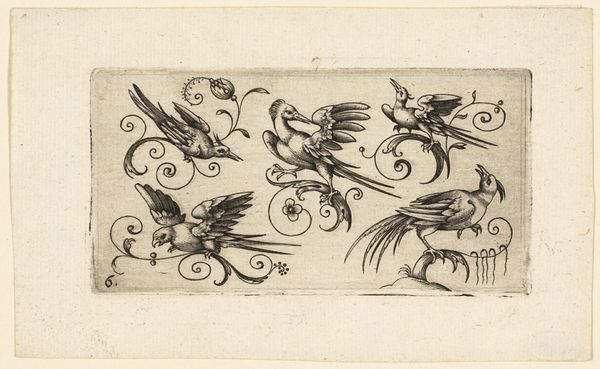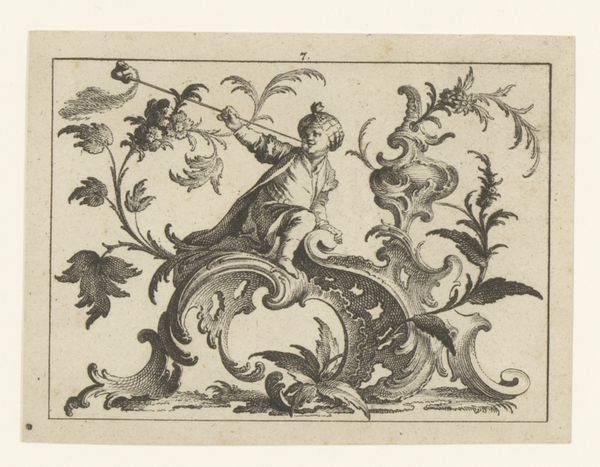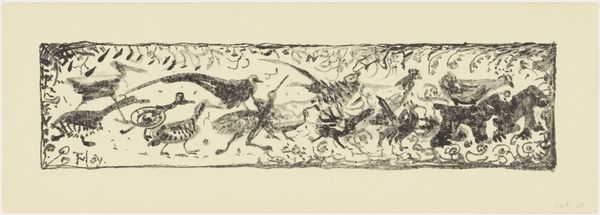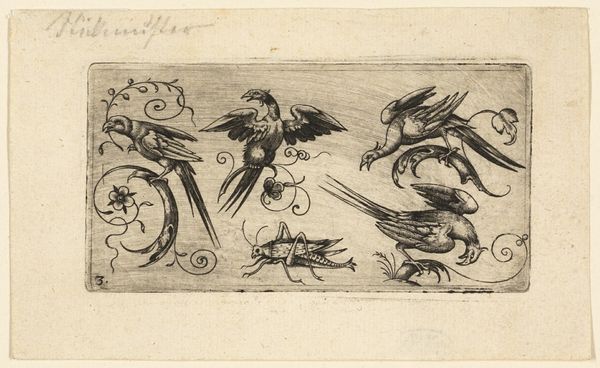
Dimensions: height 302 mm, width 454 mm
Copyright: Rijks Museum: Open Domain
Curator: Here we have Janus de Winter’s “Orchideeën,” created sometime between 1892 and 1951. It's an etching, a printmaking technique involving acid to create lines in a metal plate. Editor: What strikes me immediately is its slightly gothic sensibility, a certain dark romanticism. The strong contrast between black and white gives it a dramatic weight, even though the composition itself is quite simple. Curator: Indeed. Note how de Winter utilizes the etching process. Look closely at the lines making up the forms of the orchids. The density and varying depths etched into the plate create subtle gradations in tone and texture, even with a single color of ink. This contributes greatly to the feeling of depth and dimensionality. Editor: It makes you wonder about the labor. All of those delicate lines meticulously etched into the metal… What tools did de Winter employ, and how many proofs did it take to achieve this effect? It reminds me of 19th century botanical illustration, but infused with a uniquely modernist anxiety and tension. Curator: Precisely. It adheres in some ways to the tradition of flower painting, where careful observation is expected. Here the representation, although grounded in observable qualities, verges on the surreal through a distorted and abstracted reality. It pushes into Symbolism. Consider also, the texture in these orchids—like tiny barbs almost. What is the artist trying to say through these sharp textures? Editor: Well, maybe that's where a consideration of process illuminates its intent. Was de Winter frustrated by the medium, wrestling with the limitations of the etching needle to convey subtle details, translating into these bristled features? Or was there a socio-political undercurrent? Symbolism as resistance to industrialization? Curator: Intriguing questions. Ultimately, this etching stands as a fascinating study in contrasts. Black and white, natural and unnatural, romantic and, to your point, perhaps resisting through form. Editor: A beautiful testament to the power of materiality and making. De Winter offers not just orchids, but a dialogue of intent through the medium itself.
Comments
No comments
Be the first to comment and join the conversation on the ultimate creative platform.
